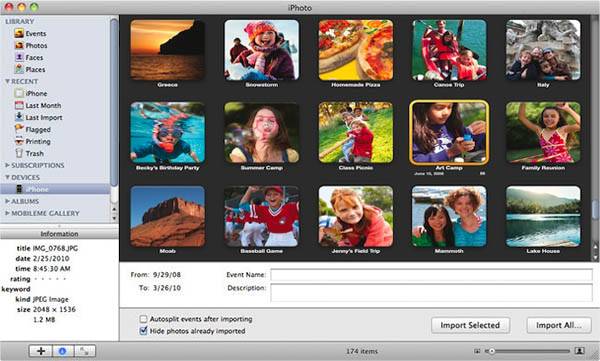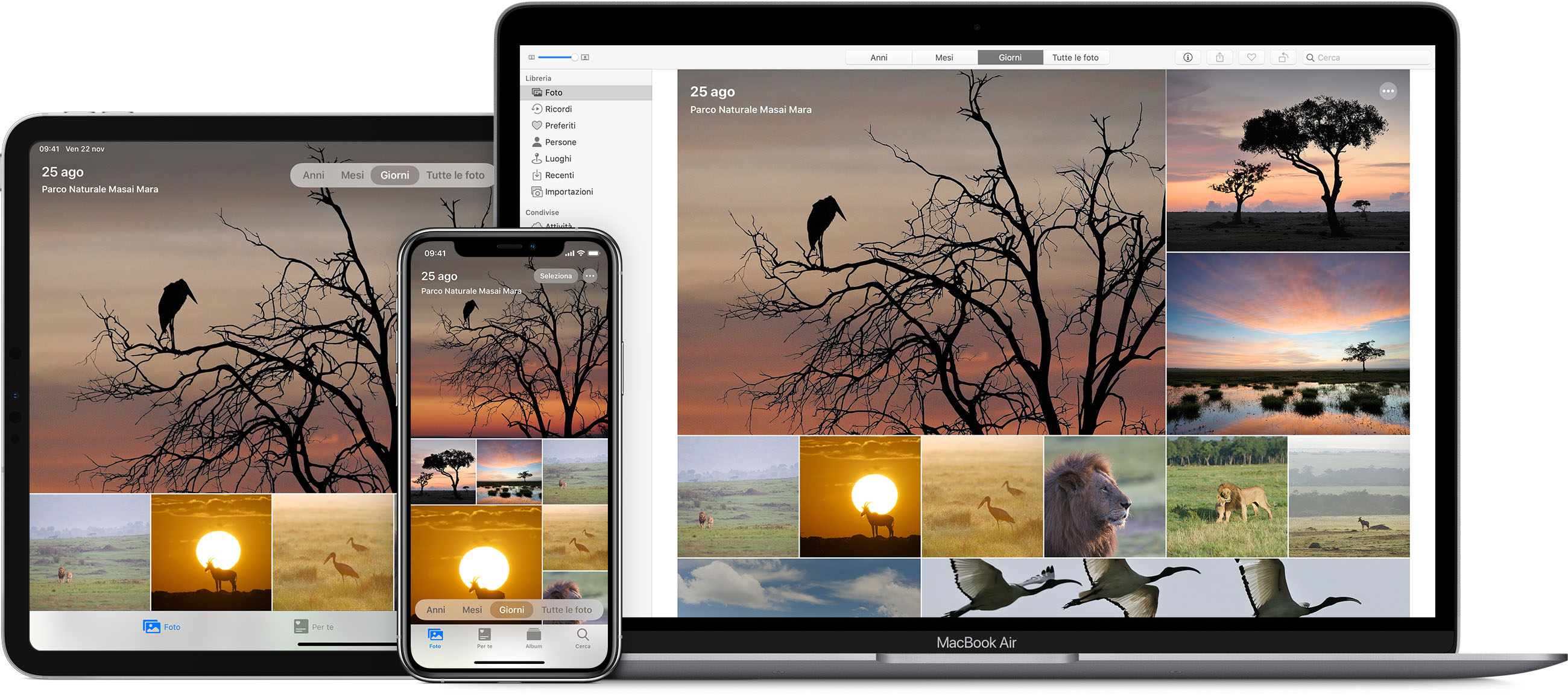Iphoto Catalina Upgrade
Patch up 9.1 again, If you try to run the patch with iPhoto ’09 (version number: 8.x), it will throw errors) Reboot (not required, but thought I’d just have a clean start) Do a software update – Ironically, Apple by then had issued their 2nd update for iTunes (with in 24 hours), not related to iPhoto; Then I started iPhoto ’11. IPhoto is a fully-featured photo organizer and editor that enables you to import, manage, sort, edit and share your digital pictures from within a user-friendly and well-designed interface. I have two large iPhoto (9.6.1) libraries with over 8- 10,000 photos in each and for just the reasons you say I have not moved them into Photos. I do not want them all on all of my devices though I love the idea of backing them up automatically. As iPhoto is no longer going to work when I upgrade my OS I am going to move them to LightRoom.
Follow the steps to know how you can recover lost iPhoto pictures after upgrade to Catalina, Mojave, or High Sierra, etc. Home Users Username Pictures Click iPhoto Library Now Right-click iPhoto Library to select Show Package Contents Open Masters or Originals folder Now, locate and recover photos on Mac after update.
| Developer(s) | Apple Inc. |
|---|---|
| Initial release | January 7, 2002; 18 years ago[1] |
| Final release | 9.6.1 / March 19, 2015; 5 years ago |
| Operating system | macOS |
| License | Proprietary |
| Website | apple.com/mac/iphoto/[dead link] |
Upgrading from macOS Catalina 10.15 or Mojave 10.14? Go to Software Update in System Preferences to find macOS Big Sur. Click Upgrade Now and follow the onscreen instructions. Upgrading from an older version of macOS? If you’re running any release from macOS 10.13 to 10.9, you can upgrade to macOS Big Sur from the App Store. Catalina on (1) 2011 MacBook Air 13″, buttery smoothly. Only 4GB’s but works buttery smoothly. Catalina on (1) 2008 iMac 24″, internet, mail photo’s, and all default apps work fine, but only 4GB ram so it can be a tad slow. Burnout paradise the ultimate box crack keygen serial number. 8GB’s might be better. Catalina on (1) Late 2012 iMac 27″, buttery smoothly (officially supported machine).
| Developer(s) | Apple Inc. |
|---|---|
| Final release | |
| Operating system | iOS |
| License | Proprietary |
| Website | apple.com/ios/iphoto/[dead link] |
iPhoto was a digital photograph manipulation software application developed by Apple Inc. It was included with every Macintoshpersonal computer from 2002 to 2015, when it was replaced with Apple's Photos application. Originally sold as part of the iLife suite of digital media management applications, iPhoto was able to import, organize, edit, print and share digital photos.
History[edit]
iPhoto was announced at Macworld 2002, during which Steve Jobs (then-CEO of Apple) also announced that macOS would be installed standard on new Macs from then on, and revealed new iMac and iBook models.[2]
On March 7, 2012, Apple CEO Tim Cook announced an iOS-native version of iPhoto alongside the third-generation iPad.[3] Roxio mydvd user manual mac.
On June 27, 2014, Apple announced that they would cease development of iPhoto and work on a transition to their new Photos app.[4] On February 5, 2015 Apple included a preview of Photos with a 10.10.3 beta.[5]
On April 8, 2015, Apple released OS X Yosemite 10.10.3, which includes the new Photos app. iPhoto and Aperture were discontinued and removed from the Mac App Store.
With the release of macOS Catalina 10.15 on October 7, 2019, iPhoto became unusable.
Features[edit]
macOS version[edit]
iPhoto was designed to allow the importing of pictures from digital cameras, local storage devices such as USB flash drive, CDs, DVDs and hardrives to a user's iPhoto Library. Almost all digital cameras were recognized without additional software. iPhoto supported most common image file formats, including several Raw image formats.[6] iPhoto also supported videos from cameras, but editing was limited to trimming clips.[citation needed]
After photos were imported, they could be titled, labeled, sorted and organized into groups (known as 'events'). Individual photos could be edited with basic image manipulation tools, such as a red-eye filter, contrast and brightness adjustments, cropping and resizing tools, and other basic functions. iPhoto did not, however, provide the comprehensive editing functionality of programs such as Apple's own Aperture, or Adobe's Photoshop (not to be confused with Photoshop Elements or Album), or GIMP.
iPhoto offered numerous options for sharing photos. Photo albums could be made into dynamic slideshows and optionally set to music imported from iTunes. Photos could be shared via iMessage, Mail, Facebook, Flickr and Twitter. Creating and sharing iCloud Photostreams are possible as well,[7] both public and invitation based ones. iPhoto was also able to sync photo albums to any iPod with a color display. These iPods might also have an audio/video output to allow photos to be played back, along with music, on any modern television. Additionally, photos could be printed to a local printer, or, in certain markets, be sent over the internet to Kodak for professional printing. iPhoto users could order a range of products, including standard prints, posters, cards, calendars, and 100-page hardcover or softcover volumes—again, such services were available only to users in certain markets.[8]
iOS version[edit]
At an Apple media event on March 7, 2012, Apple CEO Tim Cook announced a new version of iPhoto for use on the iOS mobile operating system.[9] iPhoto for iOS was made available that day on the App Store for US$4.99 alongside the already-released iMovie and GarageBand for iOS. It was officially supported on the iPhone 4 and later, iPod Touch (4th and 5th generations), iPad 2 and later and iPad Mini (1st and 2nd generations), but hackers discovered that it could be installed manually on older devices using Apple's iPhone Configuration Utility.[10][11]
iPhoto for iOS offered a feature set fairly comparable to that of its Mac counterpart. It could organize photos that were synced to the device or taken with its camera. Editing features included color correction tools and photo effects, as well as cropping and straightening tools. iPhoto for iOS lacked tools for creating books, calendars, cards and ordering prints, though it could create 'Photo Journals'—digital photo collages that could be uploaded to Apple's iCloud service and shared.[12] Adobe premiere pro cc 2018 download highly compressed.
iPhoto for iOS was highly praised for its professional tools, good performance and compatibility.[13]
iPhoto for iOS was discontinued in 2014 and removed from the App Store in favor of Photos.

See also[edit]
References[edit]
- ^'Apple Introduces iPhoto'. Retrieved May 11, 2012.
- ^'Macworld keynote: New iMac, iBooks, iPhoto'. Geek. January 7, 2002. Retrieved April 10, 2015.
- ^'Apple launches third-generation iPad with hi-res screen, and iPhoto for iOS'. Digital Photography Review. March 7, 2012. Retrieved February 8, 2014.
- ^'Apple To Cease Development Of Aperture And Transition Users To Photos For OS X'. June 27, 2014. Retrieved June 27, 2014.
- ^'Photos preview'. Archived from the original on April 7, 2015. Retrieved September 9, 2017.
- ^'Apple - OS X Mavericks: Supported digital camera RAW formats'. Apple Inc. Retrieved March 14, 2014.
- ^'Apple - iPhoto 9.5: iCloud Photo Sharing overview'. Apple Inc. Retrieved March 14, 2014.
- ^'Apple - Print Products for Mac'. Apple Inc. Retrieved March 14, 2014.
- ^'iPhoto for iOS now available on App Store for $4.99'. Idownloadblog.com. March 7, 2012. Retrieved March 16, 2012.
- ^iPhone Configuration Utility.
- ^Dilger, Daniel Eran. 'New iPhoto and iMovie apps can manually be copied to original iPad'. Retrieved April 22, 2012.
- ^Dove, Jackie. 'iPhoto Version 1.0 Review'. Retrieved April 22, 2012.
- ^Boehret, Katherine (March 13, 2012). 'Letting Your Fingers Do the Photo Editing'. All Things Digital. Retrieved March 16, 2012.
External links[edit]
- Video of iPhoto introduction at Macworld San Francisco on YouTube
- Original iPhoto TV ad on YouTube

Iphoto 9.6.1 Download For Mac
I had been wanting to upgrade iPhoto ’09 to iPhoto ’11. But I have been reading few horror stories as how the upgrade would kill iPhoto, make it crippled and inaccessible and most importantly trash photos beyond recovery. I did not jump to upgrade right after iPhoto ’11 was announced.
Then, there in fact was an update from Apple. I then followed few discussions on that. Sadly there were either new problems or the patch did not work for many. Then I came across one more patch from Apple. So then I thought I would give it a shot.
Backup
My iPhoto ’09 library is little over 13GB. I had spent LOT of time to edit, enhance and organize my library. I didn’t want to loose ‘any of them’. Even before I had planned the upgrade I had been taking snapshots of it, using Time Machine. In addition to that, I chose to ‘export’ photos by ‘Events’.
Iphoto Catalina Upgrade Free
Download Iphoto 11 For Mac
Under ‘Export Options’, I chose to save them as originals as otherwise, you have to convert them to JPEG, PNG etc. (those are time-consuming too).
These were copied into a local folder and those were backed up by Time Machine as well, before the upgrade.
Aperture
If you were like me, looking for a push to check out Aperture this would be the time. Aperture has a superb option to either ‘Copy’ of ‘Move’ photos from iPhoto ( iPhoto ’09). Before I started the upgrade, I chose to import using Aperture and it did a fantastic job. So essentially I had another (much more powerful) photo management software handling my photos. I didn’t want to delete all my photos and start from the scratch, even though I think that would have been an easy option. Since I had redundant backup’s I thought I would try to upgrade my 13GB library to see what happens.
Upgrade
Honestly, I find the documentation on the upgrade from Apple, very confusing. If you read the same page (that I pointed earlier), it refers to update 9.0.1, but when you visit the link (pointed), it has the version 9.1.
Iphoto 9.6.1 Torrent
I was not sure if I had to assume that 9.1 would include 9.0.1.
At least I didn’t find any documentation on that. So I followed the following steps (after taking backups, as listed above)
- Install iPhoto ’11 (version number : 9.x), but do not open it (yet)
- Patch up 9.0.1 [ If you try to run the patch with iPhoto ’09 (version number : 8.x), it will throw errors) ]
- Patch up 9.1 [ again, If you try to run the patch with iPhoto ’09 (version number : 8.x), it will throw errors) ]
- Reboot (not required, but thought I’d just have a clean start)
- Do a software update – Ironically, Apple by then had issued their 2nd update for iTunes (with in 24 hours), not related to iPhoto
- Then I started iPhoto ’11
- It prompted that my library has to be upgraded to be used with iPhoto ’11. I went ahead, it took a while (may be because of the size) and it came to life
- Since I had the entire library in Aperture, comparison (to see if any photo or event is missing) was very easy
- I didn’t miss anything – Events, Photos, Faces (I had painstakingly set, Geo Coordinates) were all intact !
Iphoto 9.6.1 Download
Upgrade Iphoto For Catalina

And needless to say, iPhoto ’11 is awesome. Thanks to this exercise I finally got around to play with Aperture as well.